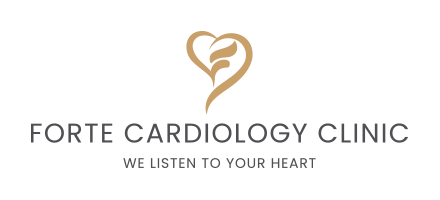Arrhythmias refer to abnormal heart rhythms characterised by irregularities in the rate or pattern of the heartbeat. These deviations from the normal heart rhythm can manifest as a heartbeat that is too fast (tachycardia), too slow (bradycardia), or irregular.
Understanding arrhythmias is crucial as they can have significant implications for cardiovascular health. Arrhythmias may lead to complications such as stroke, heart failure, or other cardiovascular events. Recognising and managing these disorders is essential for maintaining optimal heart function and preventing adverse outcomes.
The Heart's Electrical System
The heart’s electrical system is responsible for initiating and coordinating the heart’s contractions. This intricate system ensures that the heart beats synchronously, allowing for efficient blood circulation.
Normal Heart Rhythm (Sinus Rhythm)
In a healthy heart, the normal rhythm is called sinus rhythm. The heartbeat is initiated by the sinoatrial (SA) node, the heart’s natural pacemaker, located in the right atrium. The electrical impulse generated by the SA node travels through the heart, directing the orderly contraction of the atria and ventricles.
Role of the Sinoatrial (SA) Node, Atrioventricular (AV) Node, and Conducting Pathways
Sinoatrial (SA) Node – Initiates the electrical impulse that starts each heartbeat.
Atrioventricular (AV) Node – Delays the impulse to allow the atria to contract before the ventricles.
Conducting Pathways – Include the atrioventricular bundle (Bundle of His) and Purkinje fibers, transmitting the impulse through the ventricles, causing them to contract.
Types of Arrhythmias
Bradycardias
Sinus Bradycardia – Sinus bradycardia is characterised by a slower-than-normal heartbeat originating from the sinoatrial (SA) node. It can result from ageing, certain medications, or conditions affecting the SA node’s function. While it may be expected in some individuals, persistent sinus bradycardia can lead to dizziness and fatigue.
Atrioventricular (AV) Block – AV block involves a delay or interruption in the electrical signals between the atria and ventricles. Divided into first, second, and third-degree AV blocks based on the severity of signal disruption. Depending on the degree of block, AV block can lead to symptoms ranging from mild to severe, including fatigue, dizziness, or fainting.
Tachycardias
Supraventricular Tachycardia (SVT) – SVT is a rapid heart rate originating above the heart’s ventricles, often due to abnormal electrical pathways. Triggers may include stress, caffeine, or certain heart conditions. SVT can cause palpitations and chest discomfort and may require medical intervention to restore normal rhythm.
Atrial Fibrillation (Afib) – Afib is characterised by rapid, chaotic electrical signals in the atria, leading to an irregular and often rapid heartbeat. Commonly associated with conditions like hypertension, coronary artery disease, or age. Afib increases the risk of stroke and can cause symptoms such as palpitations, shortness of breath, and fatigue.
Ventricular Tachycardia (VT) – VT is a fast, regular beating of the heart’s lower chambers (ventricles). Often associated with heart disease, especially following a heart attack. VT can be life-threatening and may require immediate medical attention.
Causes and Risk Factors of Arrhythmias
Identifying and managing these causes and risk factors is crucial in preventing and treating arrhythmias.
Age-Related Changes in the Heart
The ageing process can lead to changes in the heart’s electrical system, making it more susceptible to arrhythmias. Advanced age is associated with an increased risk of arrhythmias due to wear and tear on the heart’s conduction system.
Coronary Artery Disease (CAD)
CAD involves plaque buildup in the coronary arteries, reducing blood flow to the heart muscle. Decreased blood supply can disrupt the heart’s normal electrical activity, increasing the risk of arrhythmias.
Heart Attack
A heart attack can cause scar tissue formation in the heart muscle, affecting its electrical conduction. The damaged areas may create abnormal electrical pathways, leading to arrhythmias.
Hypertension (High Blood Pressure)
Elevated blood pressure strains the heart, potentially leading to structural changes and arrhythmias. Hypertension is a significant risk factor for atrial fibrillation and other arrhythmias.
Other Cardiovascular Diseases
Conditions like heart valve disorders or cardiomyopathy can disrupt the heart’s normal electrical signalling. Structural abnormalities may create conditions conducive to arrhythmias.
Diabetes
Diabetes can damage nerves and blood vessels, affecting the heart’s electrical system. Individuals with diabetes have an increased risk of developing arrhythmias.
Metabolic Disorders
Disorders affecting electrolyte balance or metabolism, such as hyperthyroidism, can contribute to arrhythmias.
Smoking
Smoking can stimulate the release of adrenaline, potentially leading to arrhythmias. Nicotine and other chemicals in tobacco smoke can adversely affect the heart.
Excessive Alcohol
Heavy alcohol consumption can disrupt the heart’s electrical activity. Atrial fibrillation is more prevalent in individuals who consume excessive alcohol.
Drug Use
Certain drugs, both prescription and recreational, can interfere with the heart’s rhythm. Stimulants or illicit substances may pose a risk of triggering arrhythmias.
Signs and Symptoms of Arrhythmias
These symptoms can vary in severity and may not always be present. Some individuals may experience subtle symptoms, while others may have more pronounced manifestations. These signs should prompt individuals to seek medical evaluation, especially if they occur frequently, are severe, or are associated with other concerning symptoms.
- Palpitations
- Chest Discomfort or Pain
- Dizziness or Lightheadedness
- Fainting (Syncope)
- Fatigue
Diagnosis And Evaluation of Arrhythmias
These diagnostic methods are employed based on the suspected type of arrhythmia, the frequency and nature of symptoms, and individual patient characteristics. These diagnostic tools allow healthcare providers to accurately diagnose arrhythmias, determine their underlying causes, and tailor an appropriate treatment plan.
Electrocardiogram (ECG or EKG) – A non-invasive test that records the heart’s electrical activity through electrodes placed on the skin. ECG provides information about the heart’s rhythm, rate, and any abnormalities in the electrical conduction system.
Holter Monitor – A portable device worn by the patient for 24 to 48 hours to continuously record the heart’s electrical activity. It helps capture intermittent or infrequent arrhythmias not evident on a standard ECG.
Event Monitor – Similar to a Holter monitor but used intermittently when symptoms occur. Enables recording of the heart’s activity during specific events, aiding in diagnosing arrhythmias associated with symptoms.
Electrophysiology Studies (EPS) – Invasive procedure involving the insertion of catheters into the heart to study its electrical activity. EPS helps identify the specific location and mechanism of arrhythmias, guiding treatment decisions.
Blood Tests – Blood tests may be conducted to assess electrolyte levels, thyroid function, and cardiac biomarkers. Abnormalities in electrolytes or thyroid function can contribute to arrhythmias, and cardiac biomarkers may indicate heart damage.
Echocardiogram – A non-invasive imaging test using sound waves to create images of the heart’s structure and function. Echocardiography helps assess the heart’s chambers, valves, and overall function, providing valuable information about potential structural causes of arrhythmias.
Treatment Approaches for Arrhythmias
These treatment approaches are chosen based on the type of arrhythmia, its underlying cause, and the patient’s overall health. Individualised treatment plans are essential, and healthcare providers collaborate with patients to determine the most effective and appropriate interventions.
Lifestyle Modifications
Dietary Changes – Adopting a heart-healthy diet that includes fruits, vegetables, whole grains, and lean proteins while limiting sodium, saturated fats, and cholesterol.
Exercise and Weight Management – Regular, moderate-intensity exercise and maintaining a healthy weight.
Stress Reduction – Implementing stress management techniques like mindfulness, meditation, or relaxation exercises. Stress reduction can contribute to the overall well-being of the cardiovascular system and potentially alleviate stress-induced arrhythmias.
Medications
Anti-Arrhythmic Drugs – Medications designed to regulate heart rhythm by affecting the electrical impulses in the heart.
Beta-blockers, Calcium Channel Blockers – Medications that regulate heart rate and reduce the workload on the heart.
Invasive Procedures
Catheter Ablation – An invasive procedure where catheters target and ablate (destroy) specific areas of the heart causing abnormal electrical signals.
Pacemaker or Implantable Cardioverter-Defibrillator (ICD) Placement – Devices implanted under the skin that regulate heart rhythm by delivering electrical impulses (pacemaker) or shocks (ICD) when needed.






